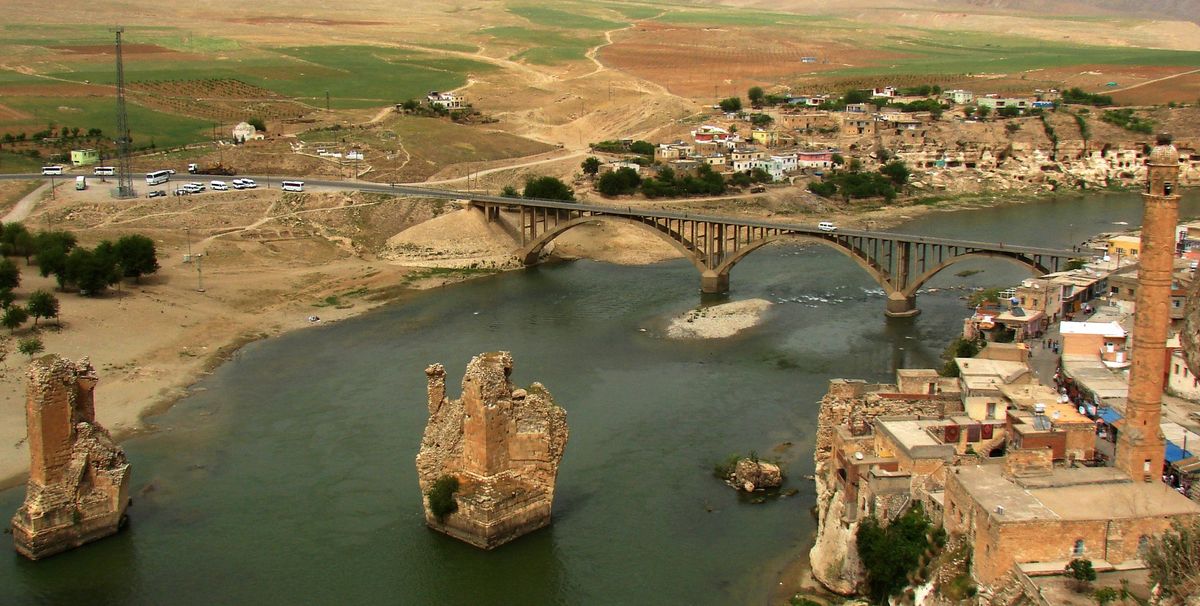Protests against the flooding of an ancient town on the Tigris River have moved to the headquarters of the Dutch firm involved in removing monuments from the site. The town of Hasankeyf, with its origins in a 12,000-year-old settlement on the banks of the river in south eastern Turkey, has become a cause celebre for conservationists since the start of construction on the giant Ilisu Dam.
A small group of activists have been protesting at the Dutch company Bresser in 's-Gravendeel, near Rotterdam, against what they claim is the firm’s vital role in the removal of a 550-year-old, 1,100 tonne medieval tomb last month.
The tomb of Zeynel Bey, killed in battle with the Ottomans in 1473, was moved on a special wheeled platform around two kilometres to “New Hasankeyf”, the settlement that Turkish authorities are building to rehouse displaced people. Further monuments, including the gate to Hasankeyf’s castle, a monastery, a mausoleum, and a bath are set for removal, it is reported.
Europa Nostra, the European heritage association, this week condemned the tomb’s removal without “sufficient” consultation or documentation, and warned of risks to the town’s 12th-century medieval bridge, 15th-century mosque complex and the tombs of the Ayyubid Sultan Süleyman and the Imam Abdullah. Hasankeyf’s flooding “would destroy evidence for one of the oldest organised human settlements ever discovered”, says the board of Europa Nostra in a statement.
The $1.1bn Ilisu Dam hydroelectric project, the biggest in Turkey’s history, was first planned in the 1950s, but legal battles delayed the start of work until 2006. The dam will deliver much-needed power generation and improve local irrigation, the Turkish authorities say.
Official government figures estimate 15,000 people will need to be resettled, but activists put the figure closer to 100,000. The local government has promised the new township will have 710 new homes and 150 “workplaces”, and says it has the potential to be a major tourist attraction.
In the Turkish city of Gaziantep, a 90,000 sq. ft museum houses extraordinary mosaics from the Roman city of Zeugma, rescued in a dramatic operation as the site was flooded by a dam across the Euphrates in the early 2000s. Security fears, however, have put Gaziantep, 30 miles from the Syrian border, off limits to most tourists.


